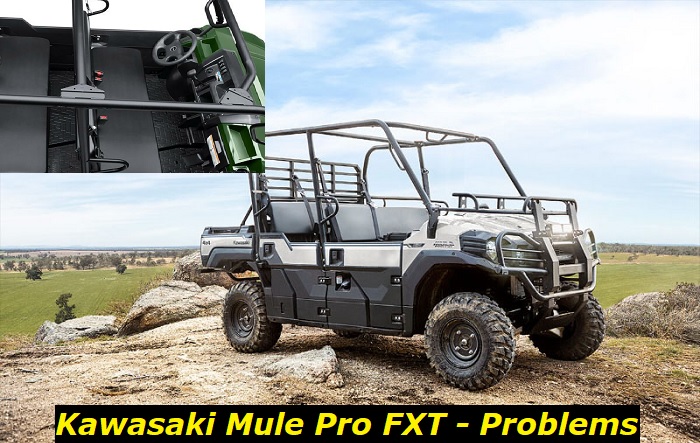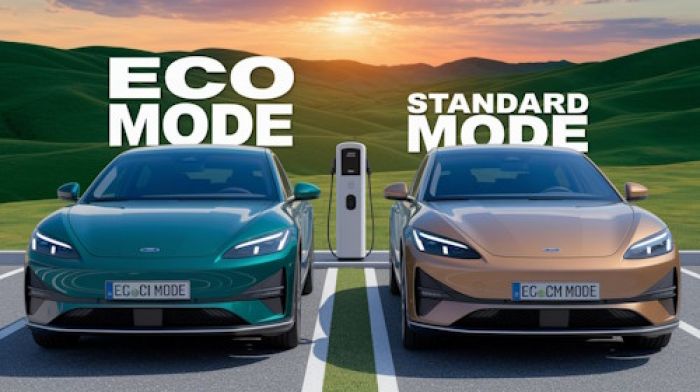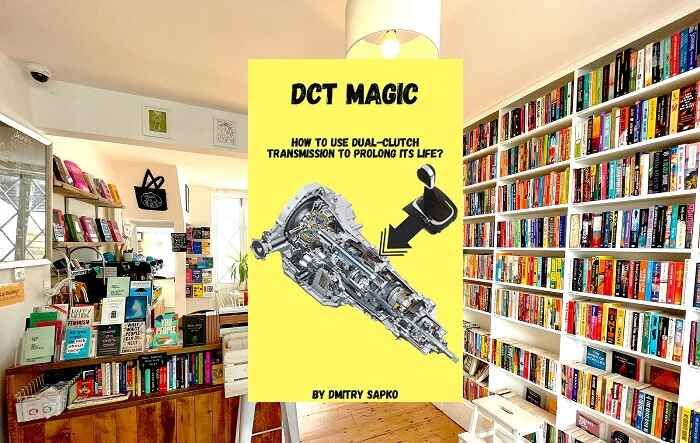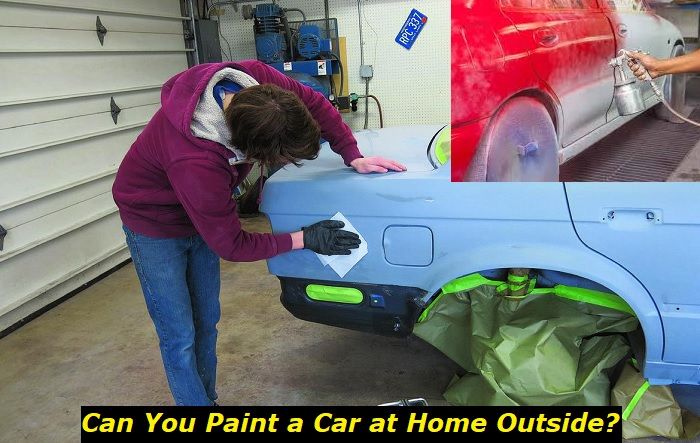Kawasaki is one of the most trusted names in off-road vehicles. They have been serving customers since 1962 and are regarded as one of the best. In 2014, Kawasaki came out with the mule Pro FXT Series. This vehicle is perfect for carrying you and your friends around rough terrain. It can also take additional cargo such as fishing rods, chainsaws, or whatever else you might need when working outdoors.
Although it is a great series, it's not without some issues that owners might want to be aware of. This article will discuss some of the most reported problems the Mule has faced.

Heat issues
The Kawasaki Mule may be one of the hottest all-terrain vehicles on the market. And when we say hottest, we mean it. Kawasaki Mule owners have reported a dangerous heat problem with their ATVs.
Imagine riding on the trails and starting to feel the heat from the vehicle so unbearable that you have to exit and let it cool down. That's precisely what some Mule owners have reported. They've pointed to the throttle body, exhaust, and engine as the key sources of this excessive heat.
Besides being uncomfortable to deal with or even painful, the high temperatures could affect the vehicle's performance or damage it entirely. Overheating can cause an array of different problems.
When things become too hot, they can cause parts around them to warp and damage. Components in the engine can even melt and cause such severe damage that an entirely new engine would be needed. Plastic pieces can quickly become overly hot and start to melt and deform.
When users report these heat problems to the manufacturer, they are not lucky enough to receive any support. Users are essentially left to their own devices to deal with this issue.
Luckily, there are aftermarket parts that claim to help alleviate the problem. Heat shields have been one go-to. A heat shield is a device that protects an object from exposure to high temperatures. Heat shields are used in various contexts, from the brakes on a car to the tiles on the space shuttle.
In general, they work by either reflecting or absorbing heat. Reflective heat shields bounce heat away from the object, while absorptive heat shields absorb and dissipate the heat.
Radiator issues
The radiator in your side-by-side is responsible for keeping the engine cool. The engine produces a lot of heat as it runs, and if this heat is not dissipated, it can cause the engine to overheat and seize up.
The radiator contains a coolant, which is circulated through the engine by the water pump. As the coolant flows through the engine, it absorbs heat and carries it away from the engine. The coolant then flows through the radiator, where it is cooled by the airflow created by the movement of the car.
The cooled coolant is then circulated back through the engine, where it picks up more heat and starts the cycle anew. By circulating coolant through the engine, the radiator prevents the engine from overheating.
That's why it's so important to have the radiator in tip-top shape. The radiator issues the Mule experiences aren't unique to just it. Instead, they are issues that almost all side-by-sides face. Because of the nature of these machines, limbs, branches, and other debris can damage the radiator and impede its ability to work.
There are a few simple steps that you can take to clean your radiator and keep it in good condition. First, use a vacuum cleaner with a brush attachment to remove any dust or dirt from the surface of the radiator. Next, use a mild detergent and a soft cloth to wipe down the radiator, being careful not to damage the fins.
Finally, use a clean cloth to dry the radiator before turning on the heat. Users can also turn to grills and shields to protect their radiator while driving through rough patches.
Fuel system issues
The Mule's fuel system has been a common issue amongst owners. This issue can result in a wide variety of problems for them. One of the most common complaints has been low power. Users have been limited to going under 15 mph due to this problem.
If you are experiencing significant power loss when accelerating or going up hills, it is likely that your fuel filter is clogged. If the fuel pump dies completely after being starved of fuel and overheating, your fuel lines are likely clogged or damaged.
A clogged fuel filter can cause all sorts of problems. It can make your engine run rough or even stall. It can also cause your Mule to get poor gas mileage. The fuel filter is located between the fuel tank and the engine, and its purpose is to remove impurities from the fuel before it reaches the engine.
Over time, the fuel filter can become clogged with dirt and debris and will need to be replaced. Fuel lines can also become clogged, preventing fuel from reaching the engine. If you suspect that your car has a clogged fuel filter or fuel line, take it to a mechanic for inspection and repair.
Using better fuel and fuel additives may help your fuel system. Higher quality fuel burns more efficiently, which means that you'll get more power and better gas mileage from your engine. Additionally, premium fuel contains fewer impurities, which can help to prolong the life of your engine.
Additives can help to keep your engine clean by preventing the formation of deposits. In addition, many fuel additives contain ingredients that can help to lubricate and protect critical engine parts. As a result, using a fuel additive can be a great way to keep your engine running smoothly and extend its lifespan.
Braking issues
Some Mule owners complain after only getting 200 hours of use out of their brakes. This brake lifespan is much shorter than what Kawasaki claims is available, 600 hours. Kawasaki even says 600 hours of brake life is available when riding in hilly areas.
When you press the brake pedal in your Mule, you expect the brakes to engage and stop the vehicle. However, if the brakes fail, it can be a very dangerous situation. There are a number of reasons why brakes might fail, including low brake fluid levels, worn brake pads, or frozen calipers.
If you suspect that your brakes are not working properly, it is important to have them checked by a mechanic as soon as possible.
In the meantime, there are a few things you can do to help prevent brake failure. Make sure to check your brake fluid level regularly and top it off if necessary. Also, be sure to keep an eye on your brake pads and replace them when they start to wear thin.
By taking these simple precautions, you can help ensure that your brakes will be there when you need them most.
Kawasaki has claimed that the early break failure is a result of a lack of maintenance by the owner. In this manner, Kawasaki is not taking responsibility for the problem. Instead, they say that the owner should follow the owner's manual in order to keep up with the required maintenance schedule for the brakes.
Some Mule owners speculate that this early break failure may be connected to the heat issues that the Mule also suffers from. The high heat could be aging the braking system prematurely.
Mule won't start
Some users have reported that their Mule won't start. This is oftentimes caused by a faulty ECU. Users have reported that the necessary fix for this is to take it to the dealer, where they will be able to use a special tool to fix it.
ECU stands for Electronic Control Unit. It's a computer that helps to regulate and monitor the engine in your Mule. The ECU constantly receives information from sensors around the engine, and it uses this data to make adjustments to the engine's timing, fuel mixture, and other settings.
This ensures that the engine is running at its optimum level, which can help to improve performance. You can think of the ECU as the brain of the engine, and it's an essential piece of hardware for any modern vehicle.
Major Recall
Unfortunately for Kawasaki, it had a significant manufacturer defect that required a recall of thousands of its products. The recall number is 20-727. This recall was related to the problems with the steering of the mule.
There was an issue that caused excessive wear of the steering system. This issue was hazardous for Mule owners, as a loss of steering could result in a violent crash.
Fortunately for owners, Kawasaki has taken responsibility for this issue and has made themselves available to repair mules free of charge. This is in contrast to some of the other issues that have been mentioned previously. Kawasaki does not take responsibility for some of the other issues and insists that customers should pay closer attention to maintenance requirements.
Conclusion
We hope you enjoyed the article on some of the most common problems the Kawasaki Mule Pro FXT faces. Now you know what to expect from your side-by-side and you perfectly know what to do once one of those problems arises.
About the authors
The CarAraC research team is composed of seasoned auto mechanics and automotive industry professionals, including individuals with advanced degrees and certifications in their field. Our team members boast prestigious credentials, reflecting their extensive knowledge and skills. These qualifications include: IMI: Institute of the Motor Industry, ASE-Certified Master Automobile Technicians; Coventry University, Graduate of MA in Automotive Journalism; Politecnico di Torino, Italy, MS Automotive Engineering; Ss. Cyril and Methodius University in Skopje, Mechanical University in Skopje; TOC Automotive College; DHA Suffa University, Department of Mechanical Engineering






Add comment